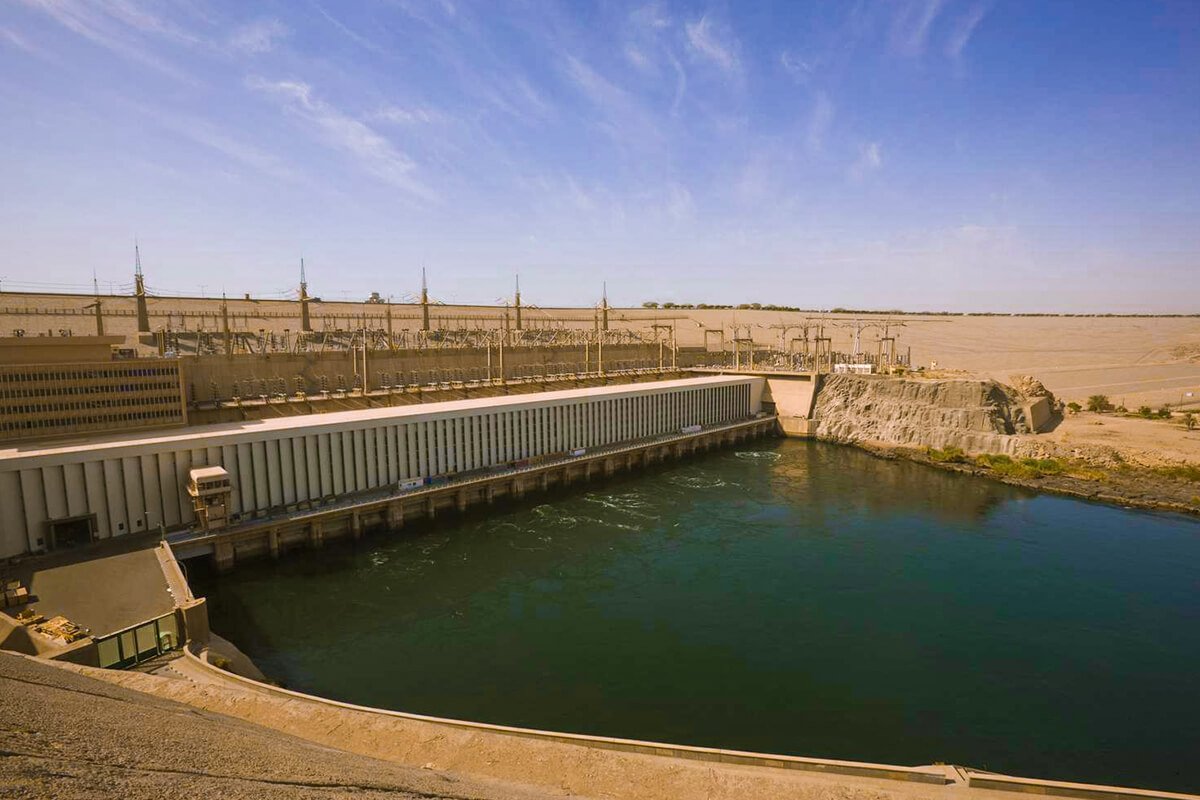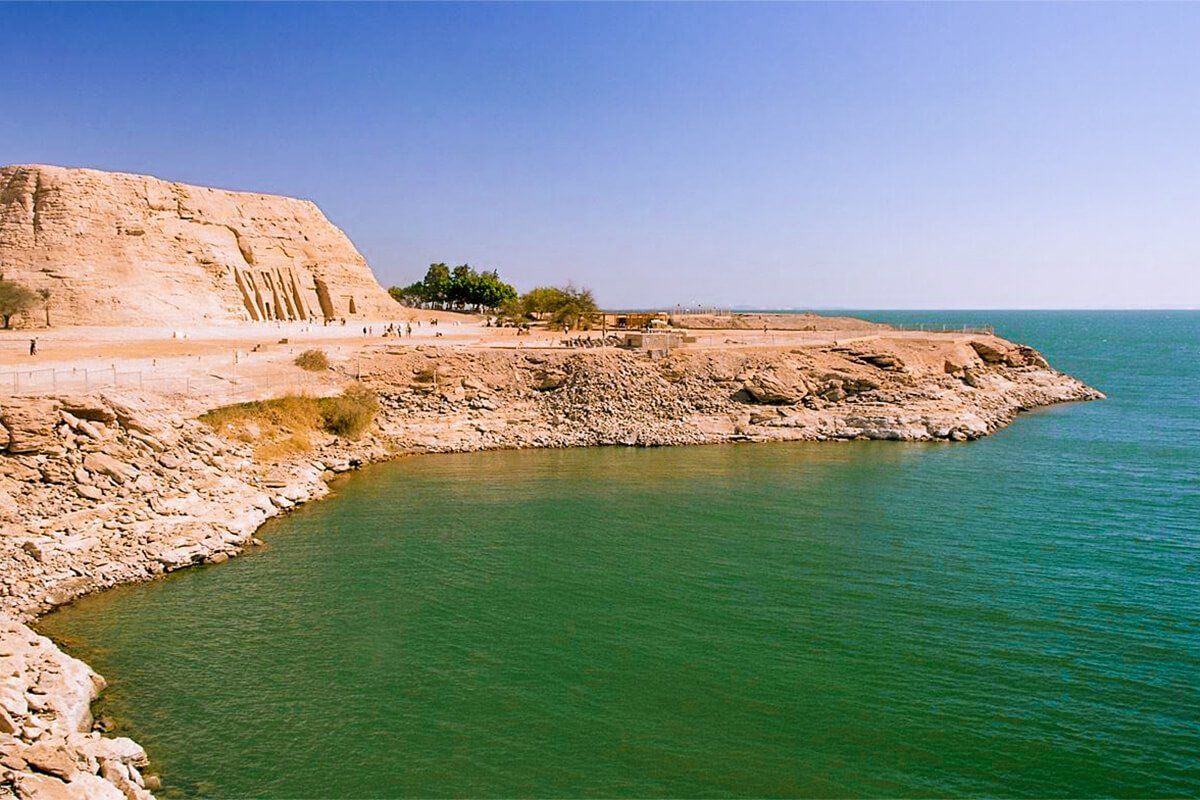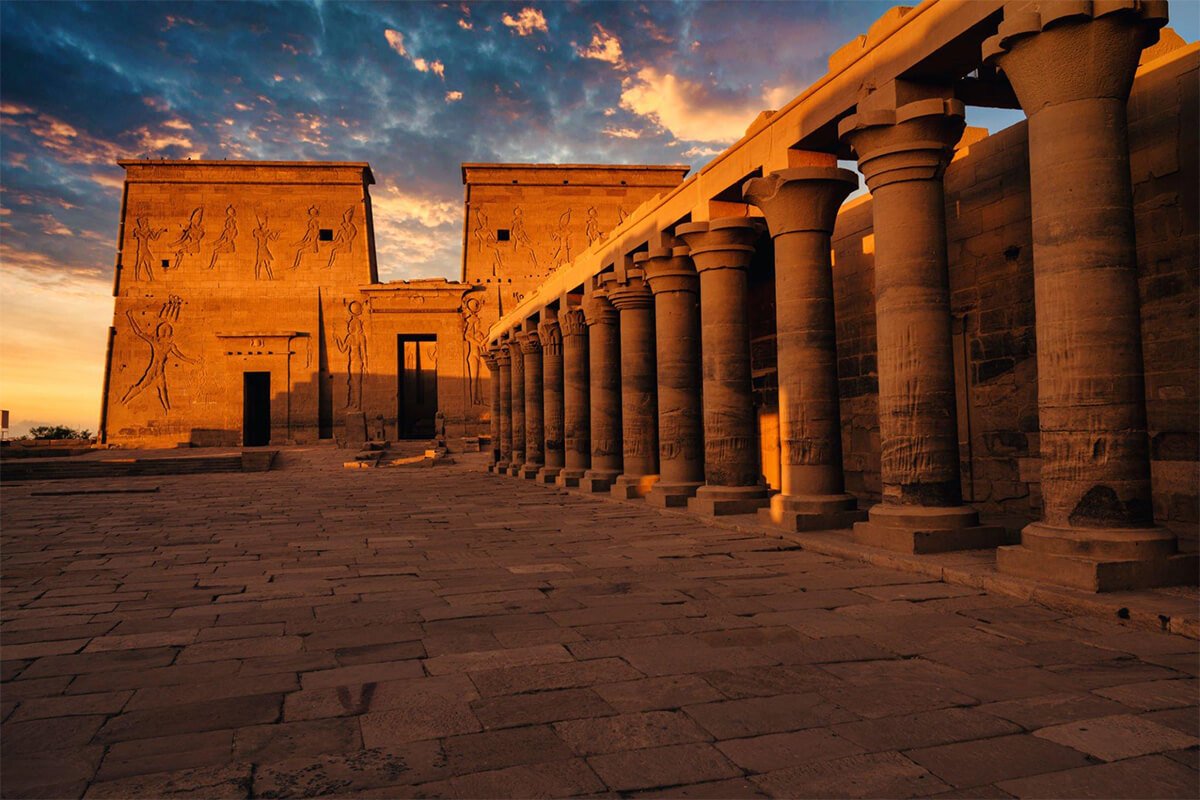Aswan High Dam: Harnessing the Power of the Nile
The Aswan High Dam stands tall as a symbol of human ingenuity and engineering excellence. This remarkable structure, built on the majestic Nile River in Egypt, has profoundly impacted the region’s development, transforming the landscape and harnessing the power of one of the world’s most iconic rivers. This comprehensive article delves into the fascinating story behind the Aswan High Dam, its construction, historical significance, environmental implications, and the multitude of benefits it has brought to the people and the land it serves.
Discover Egypt’s ancient wonders! Book your Egypt Vacation Packages now!
Historical Significance of the Aswan High Dam

The Need for Construction
The Aswan High Dam stands as a testament to humanity’s ingenuity, born out of a pressing need to control the unpredictable flooding of the majestic Nile River. For centuries, the annual inundation of the Nile brought both life and destruction to the people of Egypt. The river’s floods were essential for replenishing soil fertility, yet they also caused devastating damage to settlements, crops, and infrastructure.
Background on the Nile River and Its Flooding
The Nile, often referred to as the “lifeblood of Egypt,” was revered for its life-sustaining waters. However, the river’s erratic flood patterns posed a significant challenge to Egypt’s stability. The floods could be devastating, leading to famine and hardship, or too mild, resulting in inadequate water and soil fertility for agriculture. The Aswan High Dam became the solution to these age-old dilemmas.
Early Attempts to Control the Nile
Over the centuries, Egyptians made numerous attempts to tame the Nile’s unruly behavior. Early dams and canals were constructed, but they proved insufficient to regulate the river’s flow effectively. The Aswan Low Dam, completed in 1902, marked an initial effort to control the floods. However, it became evident that a more substantial and modern solution was required to harness the Nile’s potential for the greater good.
The Planning and Construction Phase
The planning and construction of the Aswan High Dam were no small feat, involving the collaboration of key players in its development. The ambitious project required meticulous design and execution, considering the complexities of the Nile River.
Key Players in the Dam’s Development
Diverse experts and engineers from Egypt and other nations played crucial roles in the planning and execution of the dam. The Soviet Union, the United States, and other countries offered their support, reflecting the project’s international significance. Their combined knowledge and resources contributed to the success of this monumental endeavor.
Construction Challenges
The Aswan High Dam’s construction presented an array of formidable challenges. The project involved diverting the Nile’s flow, creating a massive reservoir (Lake Nasser), and constructing a colossal dam structure. Materials were transported from various regions, and a workforce of thousands was mobilized to overcome logistical and engineering hurdles. The project, completed in 1970, was a remarkable testament to human engineering prowess.
Inauguration and Impact
The inauguration of the Aswan High Dam was a momentous occasion, celebrated with an extravagant ceremony that marked the dawn of a new era for Egypt. The dam’s immediate impact on the country was profound.
The Inauguration Ceremony
The inauguration of the Aswan High Dam took place on January 15, 1971. International dignitaries attended the ceremony, which was a grand affair. The dam’s completion represented a significant achievement, a testament to international cooperation and Egypt’s determination to control its destiny. It served as a sign of progress and hope, signaling the change from a region where the Nile’s floods were unpredictable to one with managed water resources.
Immediate Impact on Egypt
The Aswan High Dam’s completion had an immediate and transformative impact on Egypt. The dam’s regulation of the Nile’s flow ensured a consistent and reliable water supply for irrigation, boosting agricultural productivity and food security. Additionally, the dam’s hydroelectric power generation capabilities provided a stable source of electricity, promoting industrial and economic growth. The dam also enabled the expansion of urban areas and the protection of historical monuments from the destructive effects of flooding. In essence, the Aswan High Dam reshaped Egypt’s future, offering stability and opportunities that were once elusive.
Don’t miss checking out our article:
- Discover the Best Time to Travel to Egypt and book your journey.
- Consider if Is a Nile Cruise Worth It? for your Egyptian adventure.
Engineering Marvel: How the Aswan High Dam Works

Structural Components
The Aswan High Dam is a masterpiece of engineering, boasting a series of remarkable structural components that form its backbone. Its dam structure and design have been meticulously crafted to withstand the immense pressures of the Nile River. The dam’s towering presence is a testament to human ingenuity, designed to manage the Nile’s volatile waters with unwavering resilience. Additionally, the spillways and water release mechanisms built into the dam serve as vital safety valves, ensuring that water can be released in a controlled manner to prevent flooding when needed. These structural elements work in harmony to guarantee the dam’s reliability.
Function and Purpose
The dam serves many functions, each important to Egypt and its people. Its primary role is the regulation of the Nile’s flow. By skillfully controlling the river’s water levels, the dam mitigates the risk of excessive flooding and water scarcity. This feat of engineering is also an exceptional electricity generator, harnessing the power of the Nile to provide a substantial portion of Egypt’s electrical needs. Moreover, the dam plays a pivotal role in agriculture, facilitating year-round irrigation by releasing water from Lake Nasser. This irrigation capacity has transformed vast areas of arid land into fertile, cultivable fields, ensuring a stable food supply for the nation.
Environmental and Social Impact
While the Aswan High Dam has brought numerous advantages, its construction has also had profound environmental and social implications. The creation of Lake Nasser, one of the world’s largest artificial lakes, has significantly altered the region’s ecosystem. The lake’s waters now support a diverse array of wildlife and have introduced new opportunities for fishing and tourism. However, these changes have not been without challenges, as the lake’s development has disrupted some natural habitats.
Join us for adventure and discovery on our Egypt Day Tours.
Tourist Attractions around the Aswan High Dam
Lake Nasser and Nubian Villages
The enormous reservoir that the Aswan High Dam created, Lake Nasser, is more than just a feat of engineering; it is also a mesmerizing location for tourists seeking a distinctive and peaceful experience. Embarking on a cruise across Lake Nasser is like sailing through history and nature’s grandeur together. These cruises offer a chance to soak in the stunning views of the surrounding desert mountains and explore the tranquil waters. Along the way, you’ll encounter the Nubian villages, providing a glimpse into their rich culture and traditions. The Nubian people are known for their warm hospitality and vibrant way of life, making it an enriching cultural exchange. Visiting these villages allows you to discover the charm of traditional Nubian music, cuisine, and crafts, all set against a backdrop of breathtaking natural beauty.
Philae Temple
The Philae Temple is a testament to both ancient history and modern ingenuity. In the mid-20th century, the rising waters of Lake Nasser threatened this 3,000-year-old temple complex. In a remarkable international effort, the entire temple was painstakingly relocated to a nearby island to protect it from submersion due to the dam. The temple, dedicated to the goddess Isis, boasts intricate carvings, towering columns, and awe-inspiring hieroglyphics. It stands as a symbol of Egypt’s commitment to preserving its cultural heritage. The temple is not only a historical treasure but also an architectural wonder that enchants visitors with its grandeur, making it an essential stop for those exploring the area.
Sound and Light Show at the Aswan High Dam
The Aswan High Dam’s magic extends into the evening with the Sound and Light Show, a captivating multimedia experience that narrates the dam’s history and significance. The show is a unique blend of storytelling, music, and breathtaking illumination. It brings the barrier to life, explaining its engineering marvel and the transformative impact it has had on Egypt. The show is an informative and visually stunning experience suitable for visitors of all ages. If you plan to attend, it’s wise to check the show’s schedule and secure your tickets in advance. It’s a memorable way to cap off your visit, deepening your understanding of the Aswan High Dam’s historical and contemporary importance.

Practical Information for Travelers
Visiting the Aswan High Dam
If you’re planning a visit to the Aswan High Dam, here’s what you need to know. The dam is conveniently located just a few kilometers south of Aswan city. Getting there is relatively straightforward, and you can opt for a taxi, local transportation, or even a pleasant walk if you’re staying in Aswan.
The dam is a prominent landmark, so you won’t have trouble finding it. When you arrive, be prepared for a modest entrance fee, but rest assured, it’s well worth the experience. The Aswan High Dam is generally open to visitors during regular hours, so check the operation schedule to plan your visit accordingly.
Best Time to Visit
Regarding the best time to visit the Aswan High Dam, there are a couple of considerations to remember. First, consider the weather. The most comfortable time for exploration is during the winter months, roughly from November to February when temperatures are milder. If you want to avoid sweltering heat, this is the ideal period.
However, this time also corresponds to the peak tourist season, so expect larger crowds. To experience a quieter visit and more budget-friendly travel, you might consider the shoulder seasons of spring and fall. These months offer pleasant weather and fewer tourists, providing a more intimate encounter with the dam and its surroundings.
Tips for a Memorable Visit
To make the most of your visit to the Aswan High Dam, here are a few tips to ensure a memorable experience. Consider joining a guided tour to gain deeper insights into the dam’s history and significance. Knowledgeable guides can provide context and answer your questions, enhancing your understanding of this engineering marvel. Additionally, when visiting the nearby Nubian villages and cultural sites, practice cultural sensitivity by respecting local customs and traditions.
Engage with the Nubian people with an open heart and an eagerness to learn about their way of life. By doing so, you’ll not only create lasting memories but also contribute to the sustainable development of the region. Enjoy your visit to the Aswan High Dam and the surrounding attractions, and make it an unforgettable part of your Egyptian adventure.
Frequently Asked Questions
How long did it take to construct the Aswan High Dam?
The construction of the Aswan High Dam took approximately ten years, from 1960 to 1970.
What was the purpose of building the Aswan High Dam?
The primary purpose of constructing the Aswan High Dam was to control the annual flooding of the Nile, provide irrigation water, and generate electricity.
What is the capacity of the Aswan High Dam’s power station?
The power station of the Aswan High Dam has a total installed capacity of around 2,100 megawatts.
How has the Aswan High Dam impacted the environment?
The Aswan High Dam’s construction has had positive and negative environmental impacts. It has provided flood control and reliable irrigation water but has also altered the natural flow of the Nile and caused the displacement of local communities.
What is the significance of Lake Nasser?
Lake Nasser, created by the Aswan High Dam, is one of the largest artificial lakes in the world. It serves as a vital source of freshwater, supports tourism, and offers recreational activities.
How did the Aswan High Dam impact ancient Nubian monuments?
Ancient Nubian monuments in danger from rising waters were the focus of an international effort during the dam’s construction. Many archaeological sites and temples were dismantled and relocated to higher ground, preserving these historical treasures.
Conclusion
The Aswan High Dam is more than just a massive concrete structure; it is a testament to human resilience, vision, and determination. This remarkable engineering marvel has provided flood control, irrigation water, hydroelectric power, and numerous economic opportunities to Egypt and its people. While it has brought significant benefits, it has also posed environmental challenges and required careful management. The Aswan High Dam continues to symbolize progress and a source of pride for the nation, shaping the course of Egypt’s history and offering a glimpse into the boundless potential of human achievement.



